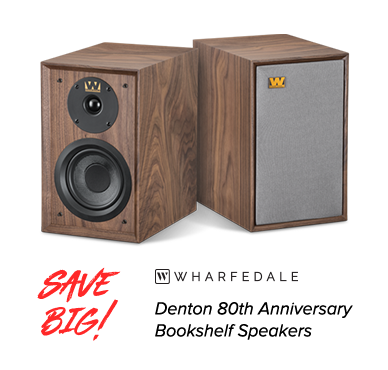Reference Channel Separation: Sutherland 20/20 MM/MC Phono Preamplifier Has Innovative Two-Mono Design and LPS Linear Power Supply, Play LPs with Extraordinary Dynamics
You'll never look back with hindsight when using the Sutherland 20/20 MM/MC phono preamplifier with the separate LPS linear power supply in your setup. The ultimate in channel separation, and featuring many of the finest elements of much costlier Sutherland models, 20/20 offers listeners the advantages of AC power-line isolation provided by battery operation without having to deal with the hassle of batteries. A recurring recipient of The Absolute Sound's Editors' Choice Award, 20/20 serves as an innovative two-mono design – meaning it is literally two identical mono phono preamplifiers. Each channel gets its own circuit board, shielded compartment, power indicator, and power cord. The only shared parts on 20/20 fall to the front and back panels. Consider 20/20 as the phono preamplifier equivalent of a pair of monoblock amplifiers – and boasting the same noise- and crosstalk-eliminating advantages, enhanced dynamic abilities, and natural sense of ease. Analog vision has seldom ever been clearer, particularly with the addition of Sutherland's LPS linear power supply.
Indeed, the LPS further raises the spectacle of The Absolute Sound Editors' Choice Award-winning 20/20. Improving AC power line isolation, filtering, and regulation, thereby giving the audio circuits an optimal DC power foundation, the linear power supply lets the music flow with significantly enhanced purity and authority. Straightforward in simplicity, stability, and reliability, it contains no active voltage series regulators that add undesired colorations – and produces no switching regulator noise that pollutes the quality of AC power. Audiophile-grade capacitors and resistors crown a U.S.A.-built jewel that could easily justify a far steeper asking price. 100% Music Direct Guaranteed.
"[Rarely] do I have the thrillingly eerie feeling of stepping into a recorded space the way 20/20 delivers it. In this regard it ranks among the finest [phono preamplifiers] at any price point."
—Wayne Garcia, The Absolute Sound, Editors' Choice Award
"The 20/20 is simple and easy to use, gorgeous to behold, beautifully built, an absolutely superb sonic performer, and, at $2,199, one of the high end's very best values."
—Stereophile
Two-Mono Design Goes Beyond Dual-Mono Via Brilliant Engineering
In the quest for the ultimate in stereo separation, the 20/20 goes beyond dual mono. Many audiophiles prefer using mono-block amplification for the benefits of eliminating crosstalk and other noise contaminants associated with shared power supplies. They also prefer the benefit of each amp having its own reservoir of power, increasing dynamic capabilities, and giving the amp a sense of ease. The exact advantage can be had in a phono preamplifier, where noise is the worst of enemies. 20/20 may look like a conventional stereo phonostage, but take off the cover. You will discover two identical mono phono circuit boards, sharing only the same front and back panels. Power supplies, power cords, and all circuitry are separate. Even the power indicator lights are independent.
A Unique Power-Supply Solution for Uncompromising Performance
20/20 uses not one, but two of the wallwarts' more sophisticated relatives – politely called a regulated tabletop power supply. To understand this choice, looking at the steps involved with AC to DC power supply elements required for no-compromise high-end performance proves illustrating: 1. Rectify the AC to DC; 2. Filter that DC; 3. Use that raw DC to power a regulating DC to DC switching inverter (this stage also provides galvanic isolation between the AC power line and the DC load); 4. Provide additional levels of filtering to remove the high-frequency ripple from the switching inverter; 5. Provide additional levels of noise isolation from the switching inverter to the load 6. Provide local voltage regulation right at the audio circuitry. From an engineering viewpoint, items 1, 2 and 3 can be accomplished with a well chosen tabletop power supply. The supplies included with 20/20 are rated at a MTF (Mean Time between Failure) of over 100,000 hours and used at less than 10% of their rated capacity. If one were to fail, replacement is simple and inexpensive. In addition, they are already safety tested and approved for use all over the world. A great deal more time, effort and money could be spent on custom circuitry – but to no performance advantage. From an audiophile viewpoint, items 4, 5 and 6 that determine the quality of DC available for the sensitive audio circuitry. That function is so important it takes up over 2/3 of each amplifier's circuit board area. Ten cascaded stages of passive RC filtering provide an enormous distance from the preamp area to the incoming DC power connector. More than 35,000 microfarads of capacitance exist on each board. The electrical 'distance' is so great, when power is first applied, it takes more than 10 seconds for the power to travel thru these 10 sections of filtering and reach the preamp stage. Voltage slowly ramps up until the zener diodes clamp it to the correct value. Until that voltage is reached, the audio output is muted. It is this section of circuitry that provides the extreme isolation from AC power line affects.
DC Connector Located for Optimal Sound Quality
Don't be looking for power connections on 20/20's back panel. Instead, you will find them located at the front and under the cover. The front of the circuit board is where the power enters the circuit and therefore where the connector went. Putting the entry point at the front permits power supply wires (low voltage DC) to be routed well away from all the sensitive part of the circuit. Contrast that with the AC IEC power connector (high voltage AC) conventionally located on the back panel very near the preamp circuitry and all the input/output jacks.
What Makes Sutherland Engineering Different
Ron Sutherland found the inspiration for his illustrious line of phono preamplifiers in the topography of Kansas. As a college student there, he observed the state's tall grass prairies and uncomplicated beauty. The Sutherland Engineering founder also fell in love with the Midwestern work ethic. He incorporates these purist albeit elusive qualities into his designs, which epitomize a disciplined approach focused on perfectionist-minded refinement, straightforward schematics, and professional-instrument-caliber craftsmanship. Embracing a "superior quality through simplicity" credo, Sutherland products avoid coloration, clutter, and contamination at all costs. What remains are U.S.-built components that ensure nothing stands between you and your music.






































